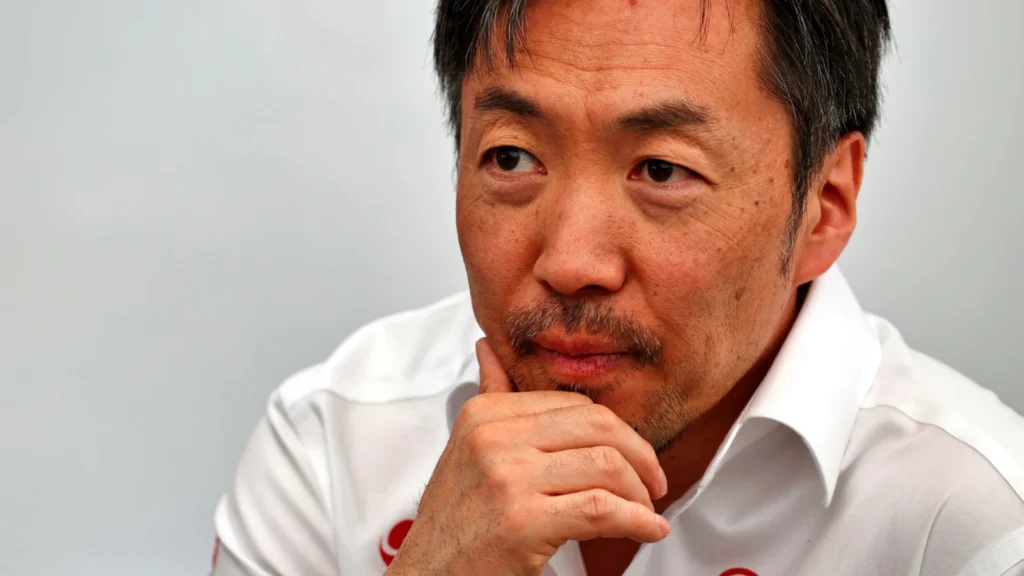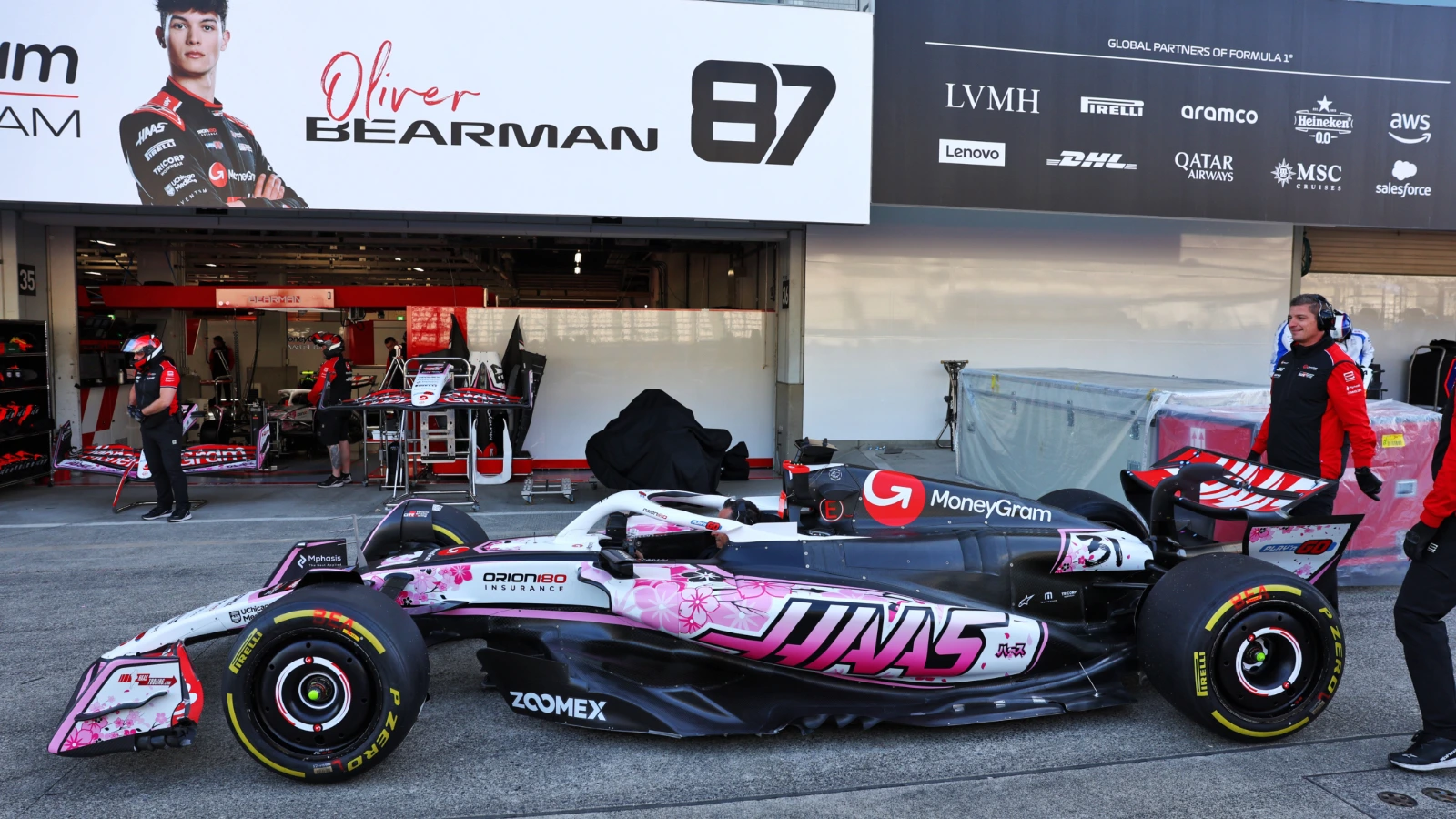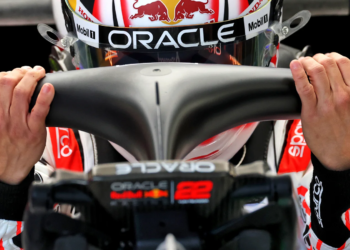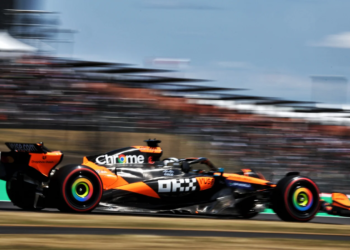Haas boss Ayao Komatsu has explained the team’s decision to accelerate the development of a new floor for the Formula 1 Japanese Grand Prix.
The American squad suffered a myriad of aero problems at the opening race in Australia, with both cars rooted to the back of the field, caused by the VF-25 being unstable in high-speed corners.
It was said that the car was losing over half-a-second on the fast Turns 9 and 10 complex of the Albert Park circuit.
The team enjoyed a rejuvenation in China last time out, with Esteban Ocon and Oliver Bearman scoring points, but Komatsu confirmed in Shanghai that it was bringing “slight” changes to the car for this weekend regardless.
Speaking to media including Motorsport Week at Suzuka, Komatsu confirmed the floor has arrived for the race, but intimated that the process of testing it and bringing it has been fast-tracked, therefore leaving some ambiguity about how successful the upgrade will be in the short-term.
“In order to get the parts here, we had to really shortcut the process – whether it’s going to make one-percent difference or 50-percent difference, honestly, I cannot say,” he said.
“Depending on what we see, it could be as bad as Melbourne, or it could be even better than Shanghai. I think FP1 the key for us; as soon as we do a lap or as soon as we go through sector one, we will know if it’s going to be like Melbourne or not.”
“We had to bring something, we couldn’t come here with the same car as Melbourne and just hope for the best.
“We just wanted to take as much in our control as possible. That’s just a judgement call in terms of risk management to shortcut that process.”
When asked how the process of bringing the floor differed to that of a more usual process, Komatsu explained: “Honestly, we just relied on our aero guys and designers’ understanding to make certain modifications.
“So certain things are geometrically different and aerodynamically different as well.
“We just put everyone’s latest understanding, without any proof, because we had to design it, we had to release it, we had to make it – otherwise we weren’t going to make it here.
“So, we had to do it. But then, respectively we put it in the windtunnel, to see if that idea is actually correct or not.
“It is correct. It’s definitely the right direction. But I just don’t know how much difference it’s going to make.”

F1 2025 a tale of two races for Haas – what will Suzuka bring?
The horror show of Round 1 for Haas began with Bearman crashing on the exit of Turn 10 in FP1, leaving the mechanics to frantically fix the car for qualifying, in which both the Brit and Ocon were rooted to the foot of the grid.
It did not fare much better in the race, but in China, things took a surprising turn.
After a disappointing beginning to the weekend in the Sprint, Ocon and Bearman secured a double-points finish, made better by the double-disqualification of the Ferraris, promoting them from seventh and 10th to fifth and eighth.
Komatsu explained that one key factor in the reversal of fortunes in Shanghai was because the car “didn’t have the aero oscillation issue,” adding: “If you look at our Turn 7, it was crazy quick.
“I was worried that we’re going to have a problem in Turn 7 or maybe T1 entry as well, but we didn’t, so we set up the car the way we wanted.
“In Melbourne, we just couldn’t – we’d just spin the car off.”
Given the nature of the Suzuka circuit and its series of compromising high-speed corners – particularly in the first sector – it is clear why Komatsu has pressed the button on the floor being hurried to his homeland in time for the Grand Prix.
READ MORE – Haas to introduce ‘slight’ changes in Japan to tackle high-speed car weakness









